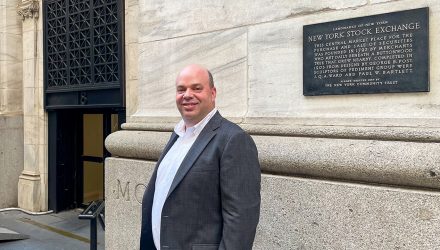Sometimes the facts can get in the way of an ETF narrative. I think that’s what is occurring with the recent outflows to the iShares ESG Aware MSCI USA ETF (ESGU). The largest ESG ETF had a $4 billion net outflow on March 20, which pushed its one-year outflows to $6 billion, per data on VettaFi’s platform. While such a large redemption is certainly eye-catching, for perspective, ESGU still pulled in $10 billion in the last three years and manages $14 billion.
Some will have you believe that the backlash toward ESG being led by a small group of asset managers and politicians is the cause of the latest outflow. I know there are some advisors that want nothing to do with ESG, but many just are seeking out the best returns for their clients. So, anytime I see a redemption that large in one ETF, I look around to see what ETF might have been the beneficiary. I think I found it.
The iShares MSCI USA Quality Factor ETF (QUAL) pulled in $4.8 billion on March 20, erasing its prior one-year net outflows and pushing the cash haul over the past 12 months to $3.2 billion. The $25 billion ETF added $1.8 billion over three years. The added flows to QUAL likely represent a further tilt toward equity risk reduction favoring large- and mid-cap stocks amid a shifting macroeconomy and the impact of the bank failures on monetary policy.

The moves into QUAL and out of ESGU are so large that this is not likely the result of individual advisors or retail investors, but rather an institutional investor or an outsourced manager supporting a wide range of advisors. Regardless of who made the move, let’s understand what the end client gave up and what they got.
ESGU takes a tilted approach to companies with strong environmental, social, and governance attributes while seeking to have a similar risk profile to the broader MSCI USA Index. As a result, it is well diversified across sectors, with 27% of assets in information technology (the S&P 500 Index has 26%) and a 4.6% stake in energy (in line with the S&P 500). ESGU’s top holdings are ones you should expect in a large-cap fund — Apple, Microsoft, Amazon.com — though the weightings are slightly different. It is easy to see how ESGU might be a proxy for investing in high-quality companies without replicating a market cap-weighted S&P 500 Index.
QUAL has some similarities and some differences with ESGU. The ETF owns companies with high return on equity, stable year-over-year earnings growth, and low financial leverage, but also seeks to have a similar risk profile to the broader MSCI USA Index. Information technology is the largest sector (22% of assets) but is soon followed by financials (16% vs. 13% for the S&P 500 Index and 12% for ESGU). Visa and Mastercard, which just became classified as financials, are two such top-10 holdings in QUAL.
For advisors concerned about debt leverage and earnings consistency in light of the recent bank failures and the impact of the Federal Reserve’s plans to shift monetary policy, a purer quality approach to investing makes sense.
Year-to-date, QUAL outperformed ESGU (6.5% vs. 4.5%), and in the past year, the dedicated quality fund lost less ground (-7.0% vs. -10.0%). Both ETFs chart 0.15% fees. Whether the recent trend continues is unknown, but the shift away from ESGU seems more like one based on investment merit than a political statement against ESG to me.
For more news, information, and analysis, visit VettaFi | ETF Trends.
